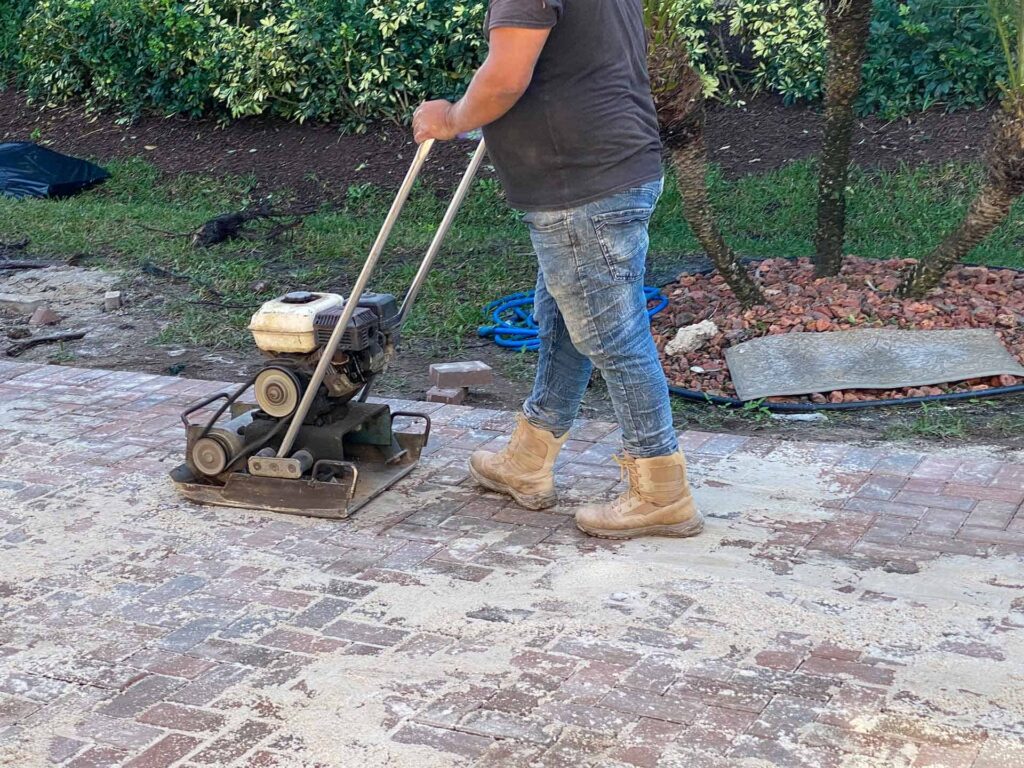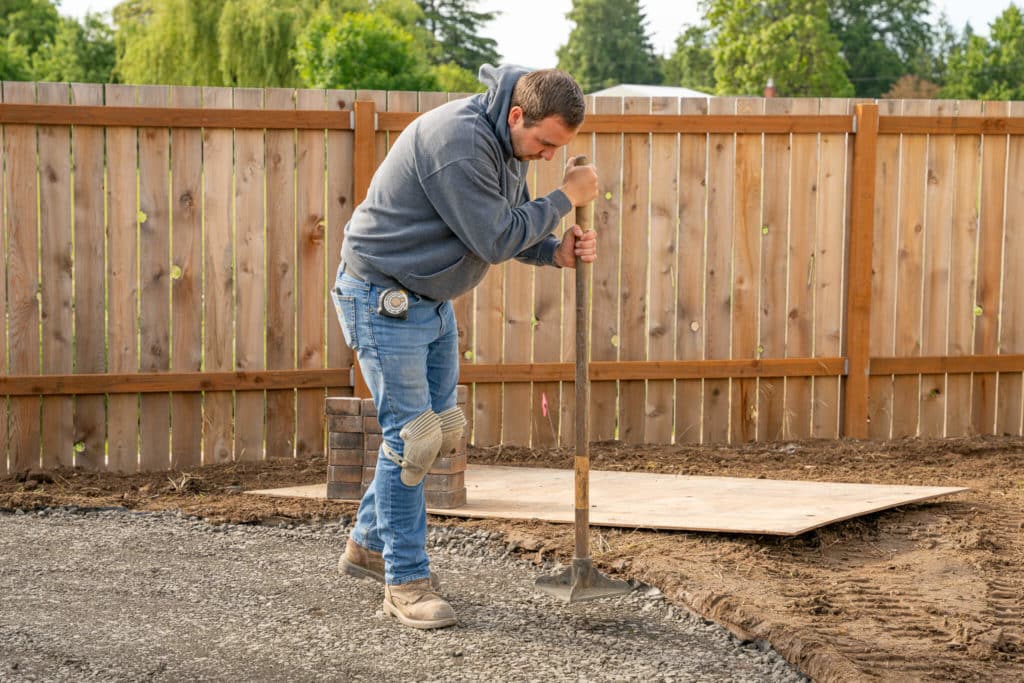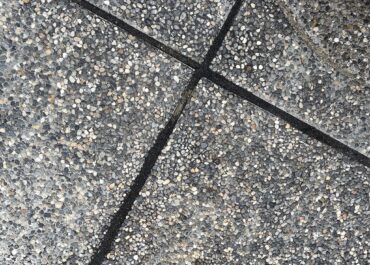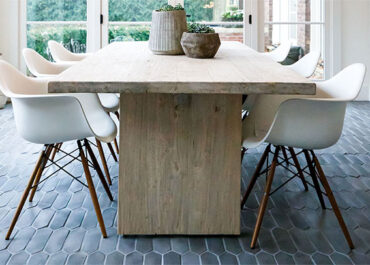
When it comes to installing pavers, achieving a durable and stable surface is crucial. And in addition to all the expertise and patience needed to handle the whole process without damaging your products, one of the essential tools for this task is a plate compactor for pavers.
In this article, we will explore the benefits of using a plate compactor for pavers, why it’s the preferable method to establish a strong base, how to choose the right product for your needs, and whether it’s possible to complete a paver installation without it.
Don’t miss: Is It Possible to Install Pavers Over Concrete Pavers?
What is a Plate Compactor for Pavers?
A plate compactor, also known as a vibratory plate compactor, is a machine specifically designed to compact and settle various types of paving materials, including pavers. It consists of a heavy steel plate that vibrates at high frequencies, applying a downward force to the surface, which is pressed against the ground for firmness.
In this sense, the vibrations and compaction action of the plate compactor help to evenly distribute and compact the pavers, ensuring proper interlocking and stability for a very long time. This process minimizes the chances of settling, shifting, or uneven grounds, ultimately creating a solid and long-lasting paver installation.
Why Use a Plate Compactor Instead of a Steel Tamper?
While a steel tamper can be used to compact pavers manually, a plate compactor offers several technical advantages, such as:
- Efficiency and Speed: Plate compactors significantly reduce the time and effort required to compact large areas of pavers. The vibrating plate quickly and efficiently compacts the surface, allowing for faster progress and increased productivity.
- Consistent Compaction: The repetitive vibrations of a plate compactor ensure consistent compaction across the entire floor. This helps eliminate voids, air pockets, and uneven settling, leading to a more stable and durable paver installation.
- Improved Interlocking: Proper interlocking between pavers is crucial for long-term stability. The high-frequency vibrations of a plate compactor facilitate the interlocking of paver units, creating a stronger and more cohesive surface.
- Reduced Physical Strain: Using a plate compactor significantly reduces the physical strain on the installer compared to manual tampering. The machine’s weight and vibration do most of the work, minimizing the risk of strain or injury.

How to Choose the Size of a Plate Compactor for Pavers
As everything When selecting a plate compactor for your paver installation project, consider the following types based on the intensity of your needs:
- Light-Duty Plate Compactor: Suitable for smaller residential projects or occasional use. It is lightweight, compact, and provides adequate compaction for lighter paver applications.
- Medium-Duty Plate Compactor: Ideal for mid-sized residential projects or light commercial use. It offers increased compaction force and efficiency, making it suitable for larger areas and heavier paver materials.
- Heavy-Duty Plate Compactor: Designed for demanding commercial or industrial applications. It provides maximum compaction force and durability, making it suitable for extensive paver installations and heavy-duty materials.
In short, when choosing a plate compactor, consider factors such as compaction force, plate size, engine power, maneuverability, and overall build quality to ensure it meets the requirements of your specific project.
But Is it Possible to Not Use a Plate Compactor?
While it is technically possible to complete a paver installation without a plate compactor – as you can see by clicking here – we do not recommend you do so. Skipping the compaction step or opting for manual tampering may lead to various issues, including uneven settling, poor interlocking, and decreased durability of the structure.

As mentioned in the article, proper compaction with a plate compactor ensures the long-term stability, strength, and performance of your installation. However, if you choose not to use a plate compactor for financial reasons or any other issue, there are alternative methods that can help achieve some level of compaction. These methods include:
- Hand Tamping: Hand tamping involves using a hand tamper or a mallet to manually compact the pavers. While this method can provide some level of compaction, it is labor-intensive and less effective in achieving uniform compaction compared to a plate compactor.
- Rubber Mallet and Scrap Wood: Another option is to use a rubber mallet and scrap wood to tap the pavers into place. This method helps settle the pavers – but again, does not provide the same level of compaction as a plate compactor.
However, it is important to note that these alternative methods are less efficient and may result in a less stable and durable paver installation. To ensure optimal results and minimize potential issues in the future, it is highly recommended to use a plate compactor specifically designed for pavers.
Professional Help to Install and Compact Pavers
That said, a plate compactor may sometimes be too much to invest in for a simple DIY paver installation project. In that case, you can compact pavers without a plate compactor using a hand tamper and rubber mallet – although your best option is to hire qualified hardscape professionals in your area.
We here at Eagle Pavers have helped countless homeowners with their paver installation during our 13 years of activity. We know the importance of working closely and adapting the situation to our customers’ needs, so we highly recommend you search for a professional in your area.
And if you happen to be around our area of activity, the Sarasota and Manatee counties, in FL, why not give us a call to help you?
You can contact us right now at +1 941-210-4192 or email us at sales@eaglepavers.us. We would be happy to hear from you and help you with your project!




